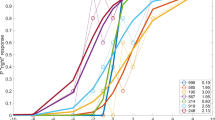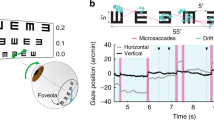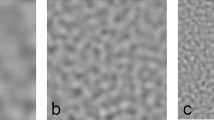Abstract
THE photoelectric corneal reflex method of recording eye movements of subjects in the sitting position1 has been applied to the investigation of eye movements which occur when convergence is voluntarily changed. In these experiments, one fixation target only was used; this was a bright pin-hole, angular diameter 1′, distant 5½ ft. from the subject and situated on the visual axis of the right eye when this eye is looking straight ahead. The subject fixated this target binocularly, then increased his convergence by subjectively moving both eyes towards the nose through equal angles, the size of which was at his discretion, and then resumed steady fixation of the target. This cycle was repeated several times during a single recording; the frequency was also at the subject's discretion.
This is a preview of subscription content, access via your institution
Access options
Subscribe to this journal
Receive 51 print issues and online access
$199.00 per year
only $3.90 per issue
Buy this article
- Purchase on Springer Link
- Instant access to full article PDF
Prices may be subject to local taxes which are calculated during checkout
Similar content being viewed by others
References
Lord, M. P., Brit. J. Ophthal., 35, 21 (1951).
Lord, M. P., and Wright, W. D., Nature, 163, 803 (1949).
Author information
Authors and Affiliations
Rights and permissions
About this article
Cite this article
LORD, M. Binocular Eye Movements when Convergence is Subjectively Changed. Nature 169, 1011–1013 (1952). https://doi.org/10.1038/1691011b0
Issue Date:
DOI: https://doi.org/10.1038/1691011b0
This article is cited by
-
Eye Rotations with Change of Accommodation
Nature (1952)
Comments
By submitting a comment you agree to abide by our Terms and Community Guidelines. If you find something abusive or that does not comply with our terms or guidelines please flag it as inappropriate.



